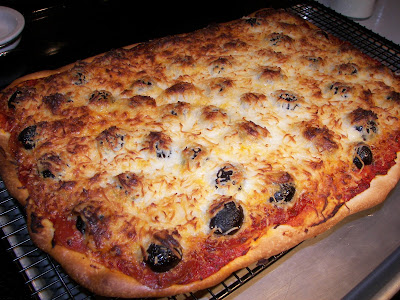It's a cold, grey day in Southern Illinois. It's one of those days that no matter what sweater I put on, how close I am to the space heater, how long the furnace runs, I cannot get warm. And getting motivated to do anything is monumental.
On a sunny day earlier in the week when my motivation was much higher, I decided it was time to get some seeds started for the summer. The seed trays came out of their dusty hiding place and fortunately I still had seed starting mix so I wasn't derailed from my project by having to run out and get supplies. It was a warm day for January and a great day to be outside, which was perfect since filling the trays can be a messy job.

You can see that there are two different soil mixes in the tray on the left. I could tell you that I am conducting an experiment on which soil mix is the best, but the truth is that I ran out of one and finished with another. When starting seeds, it is really important to use a soil mix specifically for that purpose: it's lighter and doesn't contain fertilizers that can be too much for seedlings. The lightness of the soil mix also makes it challenging to water when it's dry. Often the water will just pool on top. After I filled these trays, I took them inside to where I'll be keeping them and filled the bottom section with water to allow it to wick up from the bottom. After that, I'll use a spray bottle with a fine mist to water. The soil should be moist, but definitely not soggy. Soggy soil leads to rotting seeds.
I have to insert a note here: you can also purchase soil "plugs" to fit into the seed starting trays that you just drop the seeds into and water. They are extremely convenient and less messy than the soil mixes, but based on my previous experience I don't recommend them. One year I did do an experiment comparing the plugs to regular seed starting mix. The seeds started in the plugs produced seedlings that were weak and spindly and had significantly less root development. They are also much more expensive than a bag of seed starting mix.
 |
| chile peppers and flowers |
Lacking motivation to do anything else today, it seemed a good time to focus on finishing the seed project that reminds me there will be sunny days ahead. Since I will once again be container gardening on the deck to avoid deer damage, the variety of seeds I started is somewhat more limited than it would be if I had a traditional ground plot. I started a couple of varieties of tomatoes and more varieties of chile peppers than most would think sane, plus some flower seeds that I've collected over the years.
Ordinarily I'd spend hours pouring over various seed catalogs, reading all of the descriptions, comparing one variety to another, one catalog to another, all in an attempt to choose the perfect seeds. This year my choices were much less discerning. This year, my choices were based on "which seeds have I had the longest?"
 |
| chiles, chiles and more chiles |
In years past, I would also carefully read each seed packet, taking note of the days to germination and stagger my planting so that most of the seeds would germinate at the same time. (Yes, I realize I have OCD tendencies.) Because some of the seeds I started today were originally packaged for the years 2003 - 2006, I'm keeping my expectations for germination in general limited. This is also the reason for planting the quantity of seeds that I did. If the seeds happen to germinate better than I expect, I'll have a lot of seedlings in need of adoptive homes.
 |
| grow, baby, grow |
So what exactly did I plant? Here's the run down:
Chiles: Ancho Poblano, Big Chile, Hidalgo Serrano, Brazilian Pumpkin, Aji Amarillo, Purira, Manzano Amarillo, Ancho Mulato, Pasilla, Royal Black, Czech Black, Habanero Red Savina, Largo Purple, Fresno and NuMex Joe Parker
Tomatoes: Beefsteak and Rutger's Select
Flowers: pink cleome, butterfly milk weed, black hollyhocks, red hibiscus, red cannas, and borage (which is an herb, but I'm growing it for its flowers)
Based on the germination rates, seeds that don't do well will be discarded this year. I need to get the stockpile down so I can justify ordering more. I am a sucker for those gorgeous, colorful seed catalogs!






























